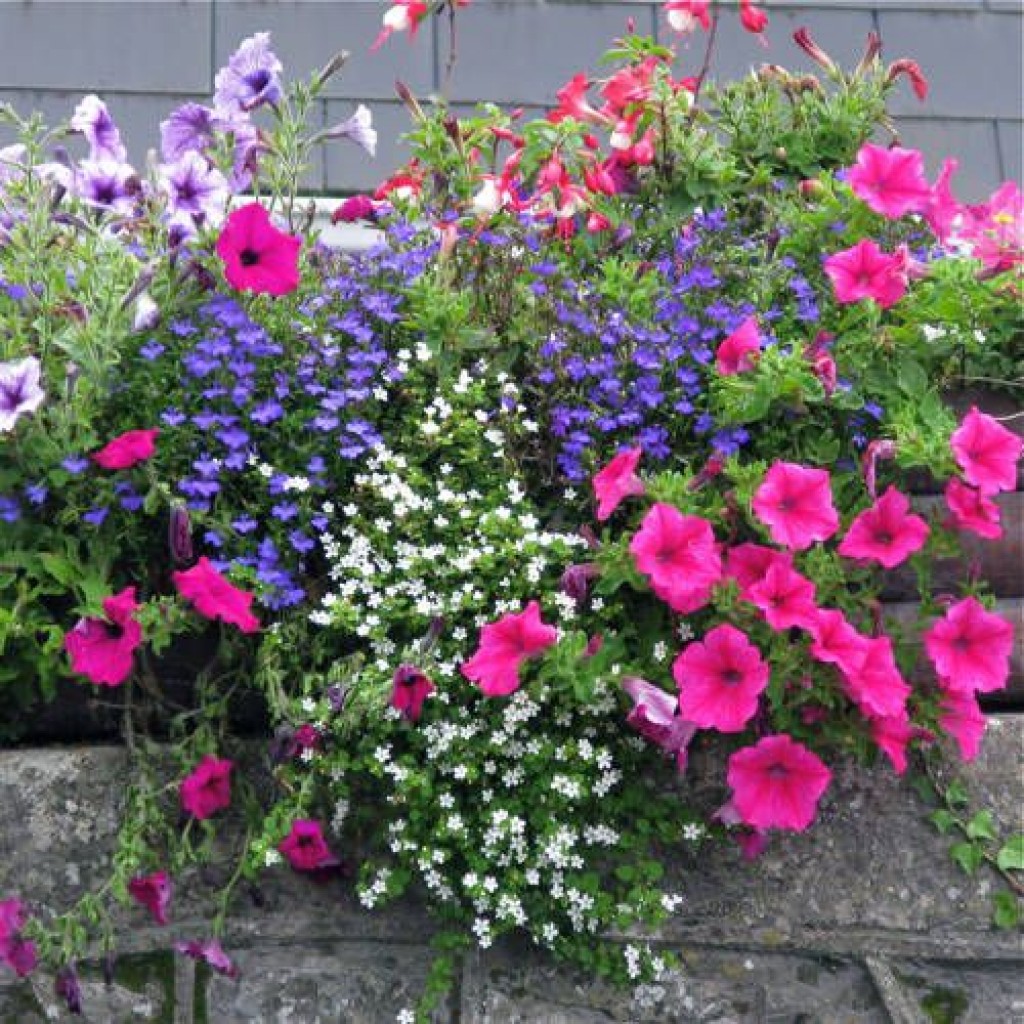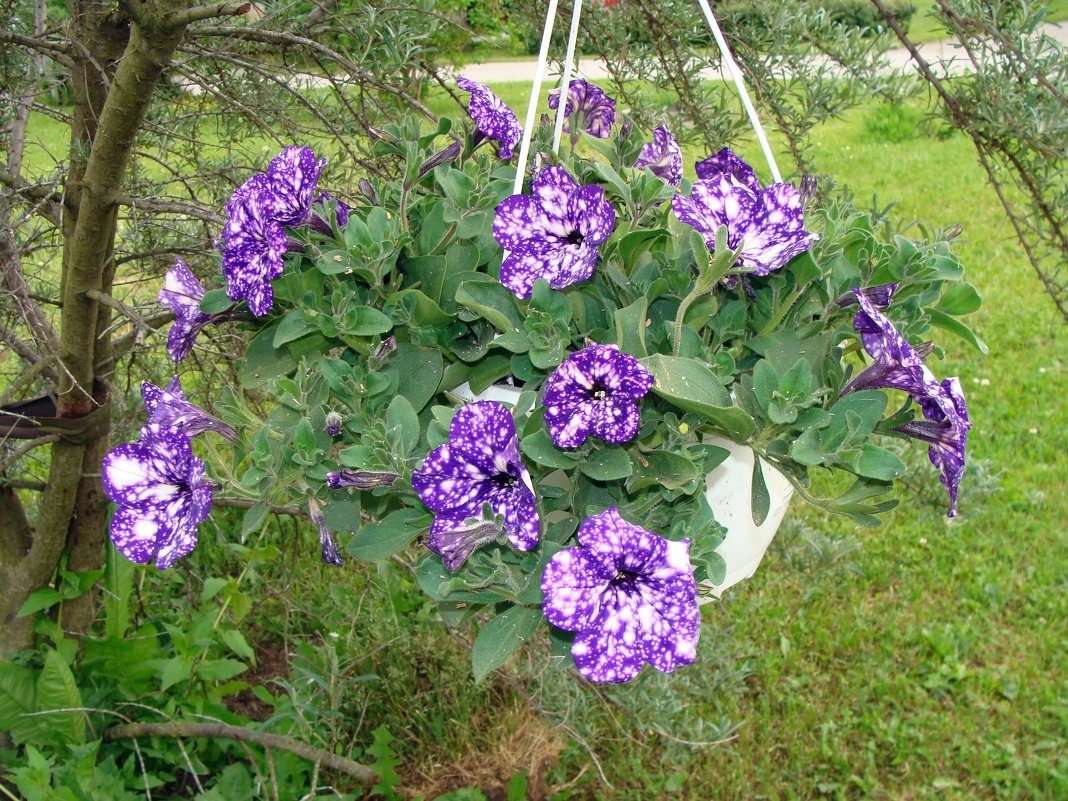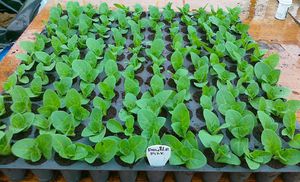In our country, petunia is grown as an annual ornamental plant. While this representative of the nightshade belongs to perennials. But due to the harsh climate in most of our Fatherland, no one thinks about preserving petunias for the winter. This business is troublesome and unpopular with Russian flower growers. Meanwhile, breeders have long bred hybrid varieties of petunias that are capable of blooming profusely several times a year.
Content
Description of petunia flowers
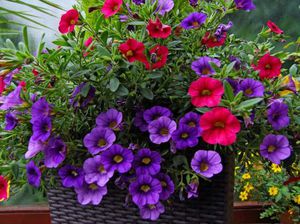 The flower came to Europe from South America. At home - in Brazil and Paraguay, petunias grow up to a meter in height. Petunias used in cultivated floriculture are plants that have small bush shape.
The flower came to Europe from South America. At home - in Brazil and Paraguay, petunias grow up to a meter in height. Petunias used in cultivated floriculture are plants that have small bush shape.
Its height depends on the type and variety. Low-growing petunias grow up to 20-30 cm, larger ones form a bush up to 60 cm. Petunias are also distinguished by the location of the stem:
- upright;
- creeping.
Breeders are constantly expanding the range of these many-sided decorations for any garden or flower bed. Most often, petunias are divided into two large groups:
- Shrub.
- Ampel petunias.
The varieties of the latter type are well suited for planting in hanging pots, because due to the flexible short shoots and a large number of small flowers, a bright "ball" is formed, visible from afar.
According to the size of the flower, petunias are divided into large-flowered and multi-flowered... The first group is distinguished by flowers larger than 10 cm. They decorate strong branches with single funnels. Such petunias look very elegant.
In plants of the second group, the flowers are much smaller, a little more than a five-ruble coin, but there are many of them. The bushes look elegant and even fun.
Petunia is extremely popular with flower growers around the world for its variety of colors, long and abundant flowering with proper care. Many are trying to grow petunia seedlings with their own hands at home.
How and at what time to start this responsible business? How to grow petunia seedlings at home? At the first stage, it is necessary to purchase high-quality seed.
Rules for growing petunias from seeds
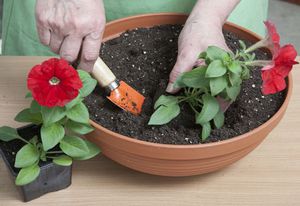 Sowing is carried out in late February, early March. Although it is possible to start growing seedlings at a later date, in this case you have a danger of not seeing flowering.
Sowing is carried out in late February, early March. Although it is possible to start growing seedlings at a later date, in this case you have a danger of not seeing flowering.
Keep in mind that it will be at least 10 weeks before this beauty will delight you with her colorful outfits. Petunia produces very small, less poppy seed, seeds.
However, you can see them on the shelves of flower shops. granular form... They are much larger and more expensive than conventional ones. The whole focus is in a special nutritionally protective shell that surrounds the plant seed.
Sometimes pellets are sold per piece. It is impossible to determine the appearance of the seeds in the package, because they are sold in opaque bags. It remains to trust the information on the package. Study it carefully. The label must state:
- Seed producer.
- Shelf life.
- Variety name.
- Flowering time.
- Adult height of the bush.
Keep in mind that paper-wrapped seeds remain viable for up to a year. Longer shelf life is provided by packaging foil or polyethylene - up to two years. How to grow petunia from seeds?
How to choose containers for seedlings
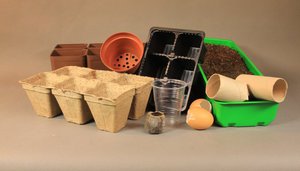 For a homemade "greenhouse" in which seeds will germinate and young seedlings will pick up the first leaves, a container for cookies, biscuits, ice cream will do. You can purchase plastic containers at the hardware store.
For a homemade "greenhouse" in which seeds will germinate and young seedlings will pick up the first leaves, a container for cookies, biscuits, ice cream will do. You can purchase plastic containers at the hardware store.
A budget and convenient option is to use an empty five-liter water bottle. With a sharp knife along the long side, make an incision on three sides and slightly bend the plastic upward, you get a "greenhouse" with a lid, light and comfortable.
Whatever you choose to grow petunias from seeds at home, do not forget to do in the bottom of the container with a heated nail drainage holes... Then the water will not stagnate in the soil and the roots will not be affected by rot.
Soil preparation
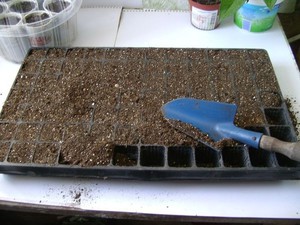 You can buy ready-made mixture at a flower shop. Such compositions are produced based on peat. There is even special soils for petunias... A high-quality substrate is industrially disinfected from pests.
You can buy ready-made mixture at a flower shop. Such compositions are produced based on peat. There is even special soils for petunias... A high-quality substrate is industrially disinfected from pests.
But you can prepare the necessary soil composition yourself, if you have the necessary ingredients, time and desire for this.
Take in equal proportions (2 parts each):
- peat;
- garden land;
- humus;
- add 1 part sand to this set.
Mix everything, the necessary nutrient base for seed germination is ready. Pour a layer of expanded clay or small river pebbles on the bottom of the container. Place soil on top of this drainage pad, about 3 to 5 cm thick.
But before you do, please accept parasite precautions... Heat the purchased or homemade composition in the oven for 15-20 minutes, or spill it with boiling water.
Some growers advise adding potassium permanganate crystals to the water to get a solution saturated in color. In this case, hang the container with soil over the basin, where the water will drain. After the ground has cooled down after disinfection, moisturize it well with a sprayer and start sowing.
Sowing petunia seeds
 Petunia is a plant that loves light and warmth very much. For successful germination (assuming you are lucky with the starting material), you need to create these conditions. Therefore, the seeds are only lay out on the surface moist soil, but we do not fall asleep with earth.
Petunia is a plant that loves light and warmth very much. For successful germination (assuming you are lucky with the starting material), you need to create these conditions. Therefore, the seeds are only lay out on the surface moist soil, but we do not fall asleep with earth.
For the convenience of performing the operation, moisten a match or a toothpick with water and pick up each seed with it. The intervals between them must be the same, at least 10-15 cm.
After you're done press the seeds to the groundto improve grip. Close the homemade greenhouse with a lid, glass, plastic wrap and put in a warm place, the simplest thing is to a room battery.
Additional illumination is not required at this stage, but heat is vital for the emergence of sprouts. Germinate petunia seeds should at a temperature of +25 degrees.
Open the ventilation container lid once a day. Seedlings will appear on the third or fourth day. However, if the seeds are expired, then they will germinate longer, about ten days.
Seedling care: lighting and watering
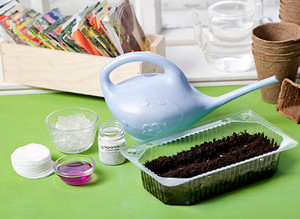 For a healthy and strong seedling at home, consider some of the developmental features of petunias. If the sprouts do not have enough light, they will reach for the sun, they will turn out to be tall, but weak.
For a healthy and strong seedling at home, consider some of the developmental features of petunias. If the sprouts do not have enough light, they will reach for the sun, they will turn out to be tall, but weak.
Therefore, after the seeds sprout, move the boxes away from the battery, but closer to the window. At this stage, the second factor plays the main role - light. Without relying on window lighting, resort to the help of additional lighting.
For these purposes use fluorescent lamps or lamps for seedlings. Turn on the additional light as soon as the seeds hatch.The lamps should burn over the seedlings for at least 12 hours. In the future, this will contribute to the formation of flower buds more quickly. The temperature in the place where you have boxes with sprouts should be + 18-20 degrees.
It is extremely important at this stage, when the seedlings are fragile and can easily die, carry out competent watering... Experienced growers advise doing this in the evening, when more intensive plant growth occurs.
Water should be soft, chlorine-free and warm... To do this, stand the tap water for at least a day on a windowsill or in another warm place. Before watering, squeeze a few drops of juice from the lemon into it.
From the very first day, as the sprouts appear, ventilate the greenhouse”By sliding the cover. Start with two to three minutes, increasing the aeration time from time to time. Such a simple method will help to maintain the moisture in the right amount and protect the seedlings from the disease called "black leg".
Diving - how to do it correctly
 The moment comes when the seedlings get cramped in the box and each sprout already needs a separate space. For this purpose, a transplant is performed. So that you don't get confused, let's figure out what leaves are on plants.
The moment comes when the seedlings get cramped in the box and each sprout already needs a separate space. For this purpose, a transplant is performed. So that you don't get confused, let's figure out what leaves are on plants.
Germinating, the seed releases two cotyledons. They have an elongated shape and are much larger than the leaves that appear later. Cotyledons are a kind of milk bottle from which the sprout feeds. But now he and his brothers on TV grew up, and like kids in kindergarten, they began to push and interfere with each other.
So it's time to dive. This operation includes transplanting and pinching the root... Each sprout is placed in a separate transparent cup. We deepen the sprout in the soil until the cotyledon leaves.
While the plants are very fragile, the root system has not formed and consists of only one root, as thick as a hair. In order not to damage, the sprout is taken together with a lump of earth and placed in a new place of residence. The soil is sterilized, as before sowing seeds - with boiling water or calcining in the oven.
After the first transplant of petunia seedlings, if you did everything correctly, the plant begins to develop more actively, increasing the root system. About a month and a half after sowing, a second transplant will be required, into larger pots. Here petunia is left before planting in open ground in the garden or outdoor pots.
Strictly speaking, root shortening is part of the diving procedure. They do this so that lateral roots begin to develop and the whole system is formed more powerful, branched. Then the plant will receive more nutrients from the soil.
But recently, flower growers have moved away from this practice, considering it too risky. Some masters in growing seedlings at home, do not do the second transplant.
They choose containers for diving with a margin, "for growth." Explaining this by the fact that there is nothing to injure the plants once again. You can choose the best way from your own experience.
Temperature regime and feeding
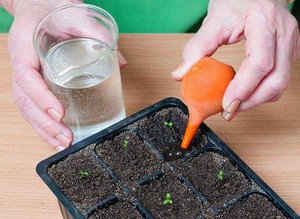 Having received a separate living space after diving, the seedlings begin to grow vigorously. Now, for their own benefit, start accustoming young petunias to low temperatures, up to + 10 °. In this case, flower growers use the term “hardening”.
Having received a separate living space after diving, the seedlings begin to grow vigorously. Now, for their own benefit, start accustoming young petunias to low temperatures, up to + 10 °. In this case, flower growers use the term “hardening”.
Seedling cups taken out to the glazed balcony or open a window in the room. Start with 15 minutes, gradually increasing the time.
After a couple of weeks of such repetitions, and provided that the outside air temperature does not drop below normal, the seedlings can be left completely in a cool place before they are transplanted to a permanent place.
It is impossible to grow good seedlings without care, and also timely and regular feeding... Start fertilizing two weeks after the first seedling transplant. In the future, do this for adult plants, once every two weeks.
Specialized shops offer florists complex fertilizerscontaining a lot of potassium.Concentrated liquid formulas are also good and must be diluted with water at home.
After the second transplant and in the future, do not forget about loosening the soil. The roots need oxygen. Petunias will respond to such care with prolonged flowering until late autumn.
Pinching seedlings
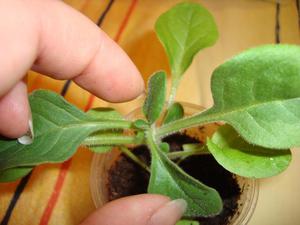 The heart rejoices from looking at a bright dense "ball" of multi-colored petunias. How to get the perfect shape at home? The secret is simple. It's all about pinching the top of the plant.
The heart rejoices from looking at a bright dense "ball" of multi-colored petunias. How to get the perfect shape at home? The secret is simple. It's all about pinching the top of the plant.
Begin this procedure as soon as four or five leaves appear on the sprout, not counting the two that grow from the hatching seed (cotyledon). It turns out that you will do the first pinching when there are seven leaves on the petunia.
By limiting upward growth, you force lateral shoots to develop. So it will be formed round bush... But keep in mind that pinching will postpone the beginning of flowering. Therefore, leave the plant alone a couple of weeks before.
Growing seedlings in peat tablets
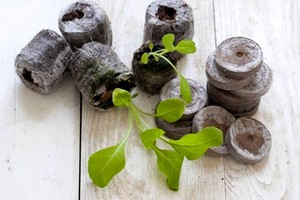 In addition to the above-described method of growing seedlings, there is another, more economical in time. Industry produces peat tablets, which are great for getting strong seedlings at home.
In addition to the above-described method of growing seedlings, there is another, more economical in time. Industry produces peat tablets, which are great for getting strong seedlings at home.
They are placed in a plastic deep dish and fill it with water. Within 10 minutes, swelling, the tablets increase in volume several times. Drain off excess water and make a small notch in the upper part of the peat column with a match or toothpick.
Place the seed of the petunia there. Sowing is complete. In the future, care for the seedlings as described above. Convenience is that in the case of peat pellets, a dive is not required.
The grown seedlings are planted immediately in open ground, along with a tablet. In the ground, it will disintegrate without your intervention. It is also good that peat gives necessary nutritional supplementation developing petunia roots.
From all of the above, we can conclude that even a beginner can grow petunia seedlings at home.
